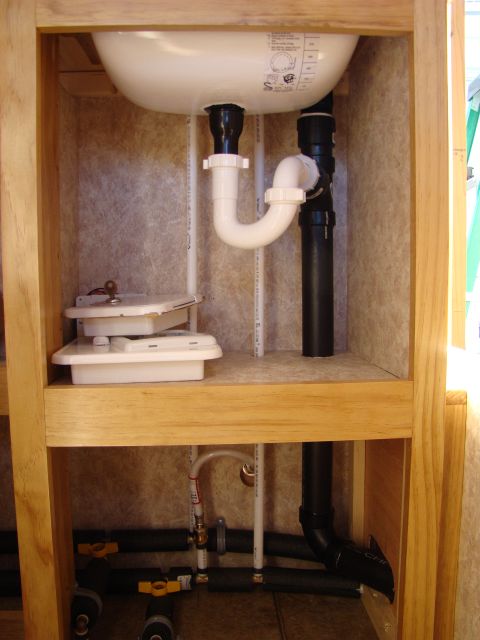Plunbing Question, to trap or not to trap?
Is a P trap necessary between the sink drain and the grey water tank?
or t n ttt for short (tnttt.com)
https://www.tnttt.com/


Shadow Catcher wrote:I will second madjack! You do need a gray water tank in many parks campgrounds etc. You need not only a P trap, but you also need a vent for the tank, search holding tank vent.
The prospect of mucking out a tank to find a wedding ring or... that dropped down the sink instead of being caught by a P trap
The only alternative I can think of is if your sink drains directly into some sort of portable holding tank i.e. the ubiquitous blue plastic jug.

 Something Nice about keeping it Simple !!!
Something Nice about keeping it Simple !!!Is a P trap necessary between the sink drain and the grey water tank?
GPW wrote:MJ, do I need a P-trap on my Bucket ?Something Nice about keeping it Simple !!!
 - P-trap???
- P-trap??? 

starleen2 wrote:GPW wrote:MJ, do I need a P-trap on my Bucket ?Something Nice about keeping it Simple !!!
Isn't that kinda implied in your statement - just think about it for a momemnt- P-trap???


...good point about that wedding ring...they sell a Ptrap for campers which connects directly to the sink and has a hose bib fitting on the side for drainage(I think)...................
madjack
_________________
Engineer Guy wrote:2. The item George Taylor refers to is often called an 'Island Trap'. It sits invisibly just under the Countertop of an Island. The 'vacuum' of water going down the drain pulls a lightly-springed Valve open so that replacement air can enter the system, rather than through a Roof-mounted Air Vent.

Engineer Guy wrote:W/o weighing in on P Trap necessity, I'll mention some details:
2. The item George Taylor refers to is often called an 'Island Trap'. It sits invisibly just under the Countertop of an Island. The 'vacuum' of water going down the drain pulls a lightly-springed Valve open so that replacement air can enter the system, rather than through a Roof-mounted Air Vent.